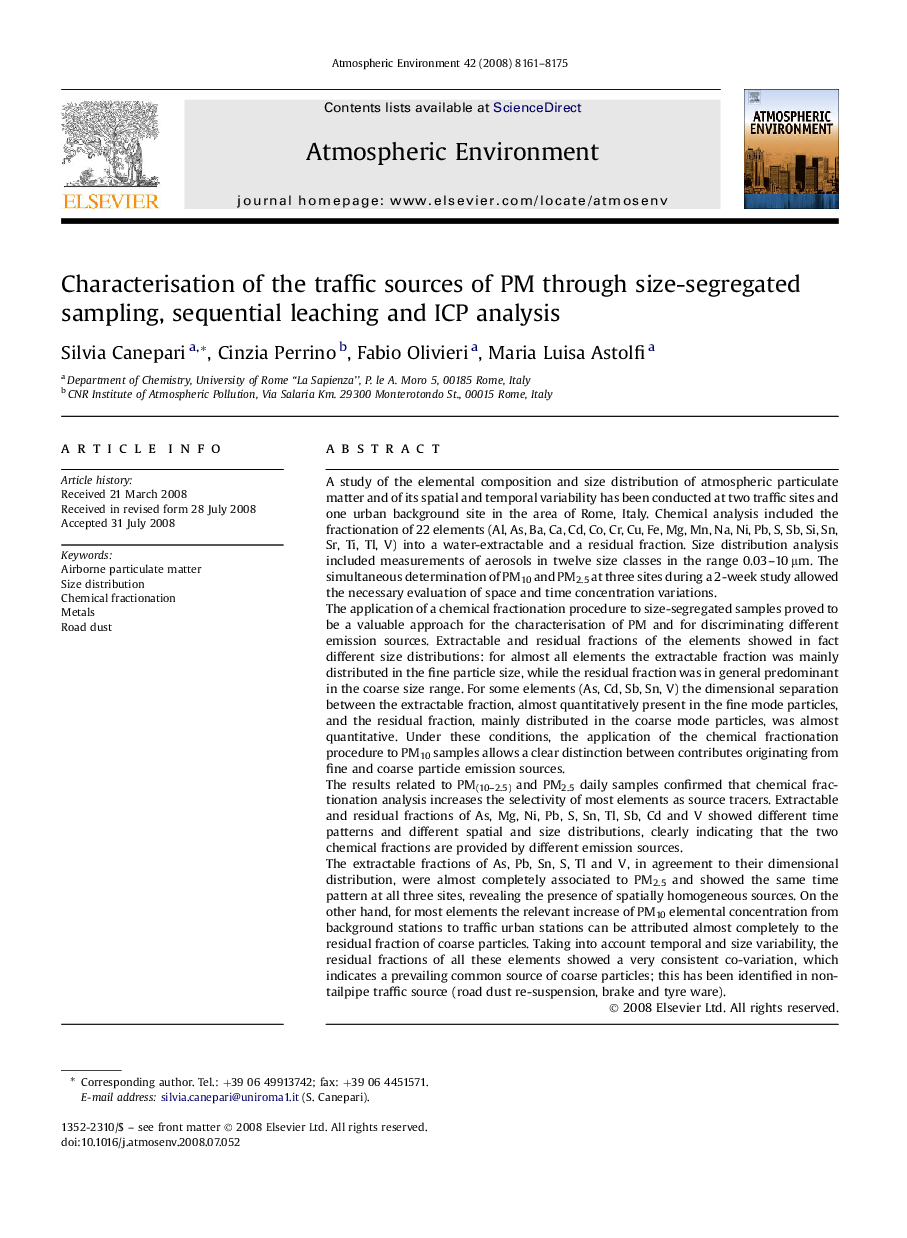| کد مقاله | کد نشریه | سال انتشار | مقاله انگلیسی | نسخه تمام متن |
|---|---|---|---|---|
| 4442030 | 1311134 | 2008 | 15 صفحه PDF | دانلود رایگان |

A study of the elemental composition and size distribution of atmospheric particulate matter and of its spatial and temporal variability has been conducted at two traffic sites and one urban background site in the area of Rome, Italy. Chemical analysis included the fractionation of 22 elements (Al, As, Ba, Ca, Cd, Co, Cr, Cu, Fe, Mg, Mn, Na, Ni, Pb, S, Sb, Si, Sn, Sr, Ti, Tl, V) into a water-extractable and a residual fraction. Size distribution analysis included measurements of aerosols in twelve size classes in the range 0.03–10 μm. The simultaneous determination of PM10 and PM2.5 at three sites during a 2-week study allowed the necessary evaluation of space and time concentration variations.The application of a chemical fractionation procedure to size-segregated samples proved to be a valuable approach for the characterisation of PM and for discriminating different emission sources. Extractable and residual fractions of the elements showed in fact different size distributions: for almost all elements the extractable fraction was mainly distributed in the fine particle size, while the residual fraction was in general predominant in the coarse size range. For some elements (As, Cd, Sb, Sn, V) the dimensional separation between the extractable fraction, almost quantitatively present in the fine mode particles, and the residual fraction, mainly distributed in the coarse mode particles, was almost quantitative. Under these conditions, the application of the chemical fractionation procedure to PM10 samples allows a clear distinction between contributes originating from fine and coarse particle emission sources.The results related to PM(10–2.5) and PM2.5 daily samples confirmed that chemical fractionation analysis increases the selectivity of most elements as source tracers. Extractable and residual fractions of As, Mg, Ni, Pb, S, Sn, Tl, Sb, Cd and V showed different time patterns and different spatial and size distributions, clearly indicating that the two chemical fractions are provided by different emission sources.The extractable fractions of As, Pb, Sn, S, Tl and V, in agreement to their dimensional distribution, were almost completely associated to PM2.5 and showed the same time pattern at all three sites, revealing the presence of spatially homogeneous sources. On the other hand, for most elements the relevant increase of PM10 elemental concentration from background stations to traffic urban stations can be attributed almost completely to the residual fraction of coarse particles. Taking into account temporal and size variability, the residual fractions of all these elements showed a very consistent co-variation, which indicates a prevailing common source of coarse particles; this has been identified in non-tailpipe traffic source (road dust re-suspension, brake and tyre ware).
Journal: Atmospheric Environment - Volume 42, Issue 35, November 2008, Pages 8161–8175